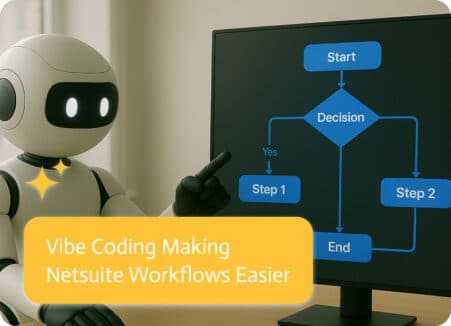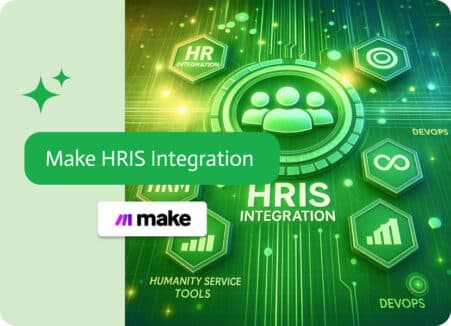

Automated Onboarding Process
The automated onboarding process refers to the use of technologies to simplify and eliminate variability in the steps needed to integrate an employee, client, or user into a new company, associate a user with a new platform, or a service. The process is far more efficient than the old ways, where document submission, account creation, and training scheduling were performed manually. Automation reduces workload, minimizes errors, creates uniformity, and improves experience.
Consider if the very first time you use a new platform or start a new job, everything just works seamlessly. You receive login credentials automatically, your training modules are ready, and Slack channels are abuzz with invites. It feels magical, but in the background, automated onboarding systems are the ones pulling the strings, making everything run smoothly.
What Is Automated Onboarding?
Techy automated onboarding is applying software applications and automation to the user’s workflows to eliminate the repetitive and tedious tasks associated with bringing a new employee, client, or user on board.
Humanized, it’s as if your most organized team member has been cloned, tasked with carrying out all checklist items, and will not take coffee breaks, make typos, or “forget” to attach the PDF.
From creating and managing user accounts, sending NDAs, booking introductory meetings, and even automating your “Welcome to the team!” Slackbot message, automation takes care of everything that needs to be done behind the scenes so that real people can concentrate on, well, being human.
Why Is This Important?
To be perfectly honest, manual onboarding is the office version of Groundhog Day. With each new addition to the team, the same 14 standardized steps occur, often performed inconsistently, incorrectly, or not done at all. What’s the result?
For starters, a mountain of hours spent sending emails over and over again
- Typos on email addresses (Have fun trying to log in!)
- Inconsistent experiences (One person gets a slick welcome kit; another gets… nada.)
- A ton of frustration, which, especially for new employees or clients, makes them feel like an afterthought
Automated onboarding eliminates all these issues by executing the exact same flawless strategy every single time. It’s the difference between group texts in a chaotic group sending spam messages versus a perfectly orchestrated performance conducted by an infallible robot who never misses a beat.
The Benefits (Why It Is Smarter Than Other Processes)
Let’s focus on why companies, whether scrappy startups or colossal enterprises, are embracing automation as if it is their new favorite colleague.
1. Automated wizardry that saves time
Welcome rituals and onboarding processes that involve data entry or manual workflows are obsolete. Strategic tasks such as culture building or talent development focused on employee welfare can now be prioritized since automation tools take care of the repetitive tasks.
2. Scale Consistency
Automated processes provide standardized checklists for every user, meaning whether you’re onboarding one intern or a hundred new hires, all of them will receive an A+ experience. The days of forgotten security badges, caps, or misplaced instructions are long gone.
3. Reduction of Errors
Automation ensures critical steps such as provisioning access, CCing Legal, and verifying documents are done without any human errors, ensuring repeatability.
4. Engaging Clients
Notes are smooth sailing through and through. This gives new hires a feeling of confidence in themselves and clients a warm welcome. Users feel validated for making the choice that they did. Automation ensures first impressions without breaking a sweat.
5. Automating What Matters
Want to know who hasn’t uploaded their tax forms? Your system knows, and now so do you. Identify all the onboarding steps that are most commonly riddled with confusion, and go from there.
Who Should Use Automated Onboarding?
Spoiler alert: almost everyone. But let’s get specific.
HR Teams:
Chasing signatures and contract emails is fundamentally pointless. Set welcome emails, contracts, benefits, and training modules up to be triggered post-signup, and watch the magic happen.
For IT Departments
No manual work is needed to assign hardware, configure permissions, and provision accounts. Well, perhaps a single digit for monitoring.
For SaaS Platforms
Did users just sign up for a new account? They may now be guided through the setup, walkthroughs, and adoption of other features seamlessly. Think of us as your SaaS concierge.
For Client-Facing Teams
Your client-facing personnel may now effortlessly onboard clients with automated milestone tracking, kickoff scheduling, and welcome packet dispatching. It is a service tailored to the individual, but without the expense.
If your organization routinely performs repetitive onboarding tasks over, say, two times a month, then those processes are ripe for automation.
How Does It Work?
Automated onboarding isn’t just one tool, it’s a stack of smart software choreographed like a digital ballet. Here’s how it usually works:
- Trigger Event
New hire accepted offer? Client signed contract? User created an account? That’s how the process begins. - Workflow Engine Takes Over
Tools like Noca or native HR/CRM platforms (like BambooHR, HubSpot, or Salesforce) run the onboarding workflow. - Tasks Execute Automatically
Emails go out, accounts get created, documents are requested, and calendars are booked, all without human input. - Progress Tracking
Dashboards show who’s done what, who’s stuck, and who needs a friendly (automated) nudge.
It’s like a digital Rube Goldberg machine, but instead of pouring cereal, it’s setting your new hire up with Notion docs and two-factor authentication.
Popular Tools for Automating Onboarding
Some crowd favorites in the automation game:
- BambooHR – Built-in onboarding tools for HR teams
- Noca – For enterprise-grade integrations and complex logic
- Rippling – All-in-one platform for employee onboarding (HR, IT, finance)
- Intercom – Onboard users inside your SaaS app with guided tours and messages
- Tallyfy / Process Street – Document and run process workflows like a checklist on autopilot
Pick the stack that matches your size, budget, and how many spreadsheets you want to banish from your life.
Real-World Use Cases
Tech Startup: Automates account setting up, safety education, and swag delivery for remote engineers in five different time zones.
Healthcare Organization: Provides digital forms, booking appointments, and proof of insurance to new patients.
E-commerce Platform: Provides legal documents, API key generation, and automated how-to guides to new sellers.
Law Firm: Securely provides new clients with automated intake forms, meeting calendars, and payment information instructions.
What Happens If You Don’t Automate?
Take a look:
- New employee starts.
- IT forgot to set up their laptop.
- HR sent the wrong forms.
- Nobody invited them to Slack.
- They spend the first week watching YouTube tutorials on how to reset passwords.
This is where the awkwardness, wasted time, and a 50/50 shot they ghost you before week two comes in. Manual onboarding isn’t just inefficient, it’s a retention risk, a brand ding, and frankly, a vibe killer.
Final Thoughts: Work Smarter, Not Harder
The goal of automated onboarding is to free up human resources to concentrate on their core competencies, which include fostering relationships, resolving issues, and enlivening the culture.
One rule applies whether you’re onboarding your fifth employee or your 5,000th: If you can templatize it, you can automate it.
Let’s face it, AI was essentially designed to remind people to upload their W-9s and send calendar invites.


